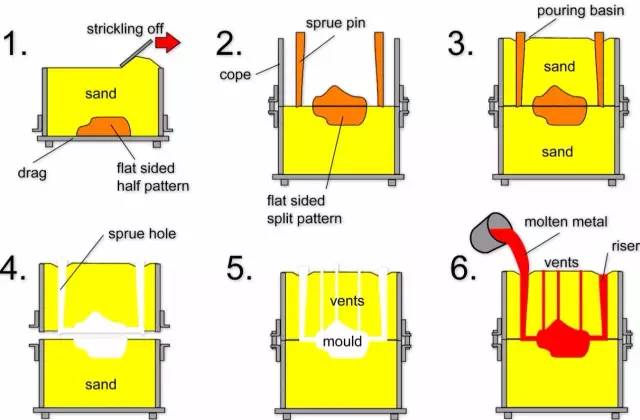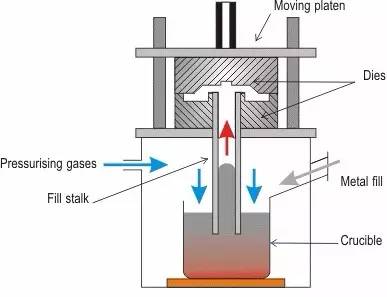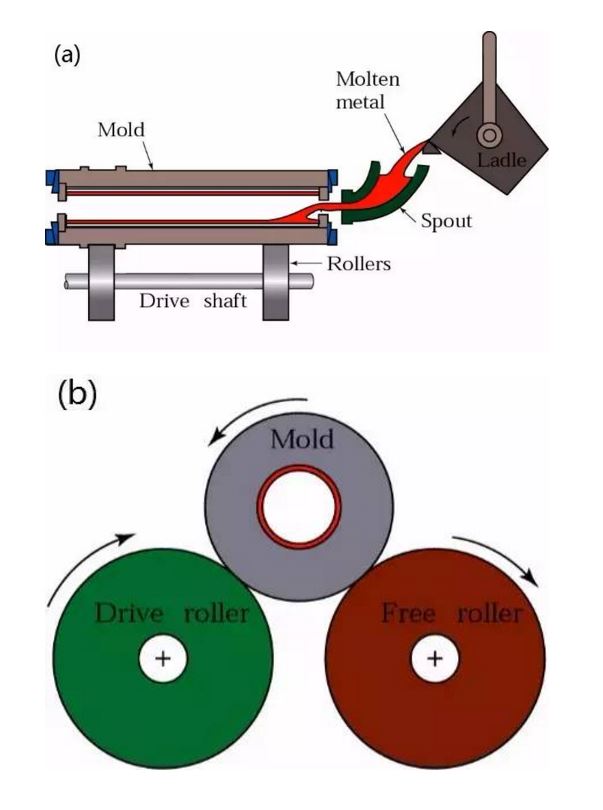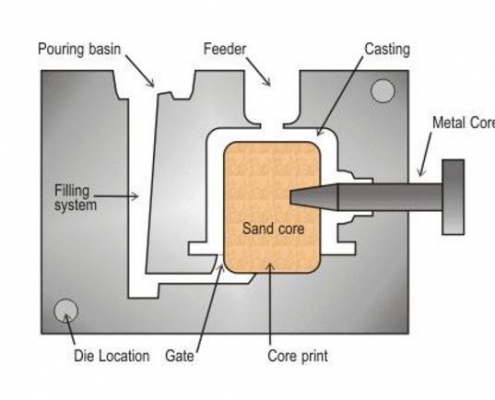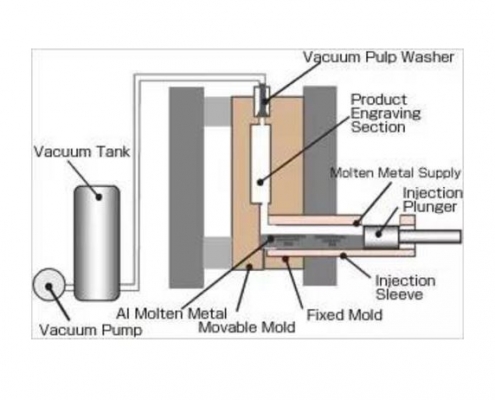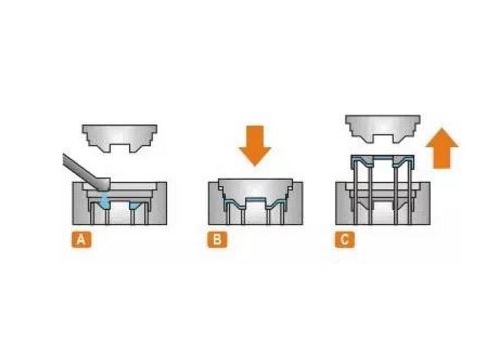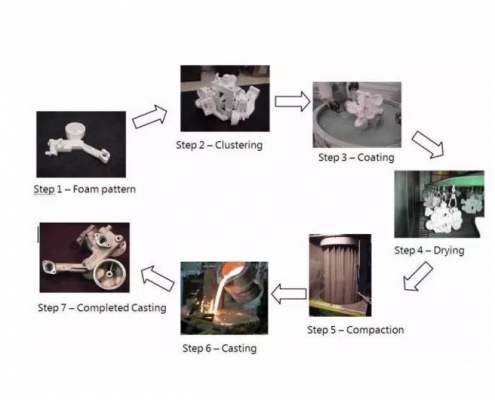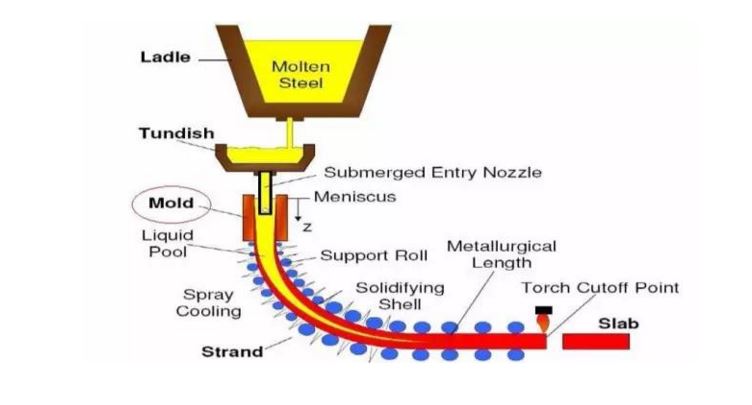Through the application of the lost foam and solid casting, the paper sprue tube does not produce an endothermic reaction or a gasification and cooling of the foaming runner at the beginning of the molten metal casting like the ceramic tube.
Because of its good thermal insulation performance, the paper sprue tube reduces the heat transfer of the molten metal to the pipe wall, so that keeping the molten metal without cooling is equivalent to increasing the temperature at which the molten metal enters the mold, and the temperature of the molten metal is relatively stable, prompting the molten metal. Filling is fast and smooth. The molten metal has sufficient time to replenish, which is beneficial to equalization and solidification.
The advantages of a paper sprue tube are as follows:
(1) Light weight, good toughness, easy to cut, easy to install, easy to connect with foam plastic runner.
(2) Good high temperature strength, high refractoriness and strong anti-scour ability. The paper sprue tube adopts socket connection, and the filter mesh is used together to filter the slag and impurities after pouring the molten metal into the runner, effectively preventing and Eliminate the occurrence of slag inclusion defects.
(3) Does not have any effect with the molten metal, maintains the original performance of the molten metal, and has no carburization problem for the casting. Use paper sprue tube, sprue cup and sprue superheat zone, sprue and sprue joint, no foam or paint layer, will not cause sand washing, sand inclusion and sand into the casting White spot (dot) defects. The paper sprue tube has high refractoriness, reducing and avoiding the formation of carbon deposits and wrinkle defects.
(4) Compared with the foam-coated sprue, the paper uses a hollow hollow sprue tube, and the initial casting does not burn the foam material, which reduces the incidence of the reverse reaction caused by the pyrolysis and gasification reaction of the foam material during pouring. Effectively reduce the heat loss of the runner metal liquid, and prevent the occurrence of problems such as sudden and small, broken flow during the casting process due to back spray.
(5) After pouring with a paper runner, there is little hard solid waste, which is easy to peel off after high temperature.
Paper sprue tube effect
According to the situation of a foundry enterprise, replacing the ceramic tube runner with a paper sprue tube, the same pattern can reduce the cutting and binding time, which can save 2/3 time; because the paper sprue tube itself is very light, The labor intensity of the operator is greatly reduced. The sprue splicing assembly task that originally required 2 to 3 people can be completed. Now it can be completed by one person under normal conditions, and the effect and efficiency are better than the original ceramic sprue tube. Paper sprue tubes are easy to cut, unlike ceramic sprue tubes, which require a special cutting machine. Originally used ceramic sprue tube cutting, noise, dust, and labor.
The paper sprue tube of the same specification is about 1/10 of the quality of the ceramic sprue tube. The texture is light and lightweight, and the handling and use are labor-saving. The former male worker can now be qualified and the labor intensity is greatly reduced. After using the paper sprue tube, the hand saw can be cut freely according to the length of use, and the dust is small, and there is almost no noise. The production workshop environment has been greatly improved.
It can be seen from the production site that after the use, due to the socket connection and the tight interface, the risk of the molding sand entering the mold during the molding is eliminated, so that the sand inclusion defect is reduced, the scrap rate of the foundry is significantly reduced, and the economic benefit is obviously improved.
Conclusion
The raw material of the paper sprue tube is made of waste paper and special materials. It is non-burning, light weight and degradable. It realizes the reuse of resources and reduces environmental pollution. It is supported by the national environmental protection policy. The paper sprue pipe has various specifications such as straight pipe, elbow pipe, equal-diameter tee, variable-diameter tee, and variable-diameter straight-through. The lower end of the pouring cup can be customized with a tight seamless interface, and adopts a stop form; generally, the common sprue tubes are mainly round.
At present, the price of paper sprue tubes is relatively high, causing users to hesitate and influencing the use of casting enterprises. Therefore, improving quality and reducing costs are new issues faced by paper sprue pipe manufacturing enterprises. It is believed that with the continuous advancement of technologies such as industrialization and automation, the widespread use of paper sprue pipes in the foundry industry will become a reality.
Paper sprue tubes have many advantages over paper sprue tubes compared to (solid) sprues, sprues, and ceramic sprue tubes that have been widely used in plastic foam sheets, resulting in solid casting of resin sand. The casting system of castings such as large machine bed is simplified, the whole process of production is simplified, the casting defects are obviously reduced, and the high-quality castings are cast in a short production cycle, which brings significant economic benefits to the enterprise.

